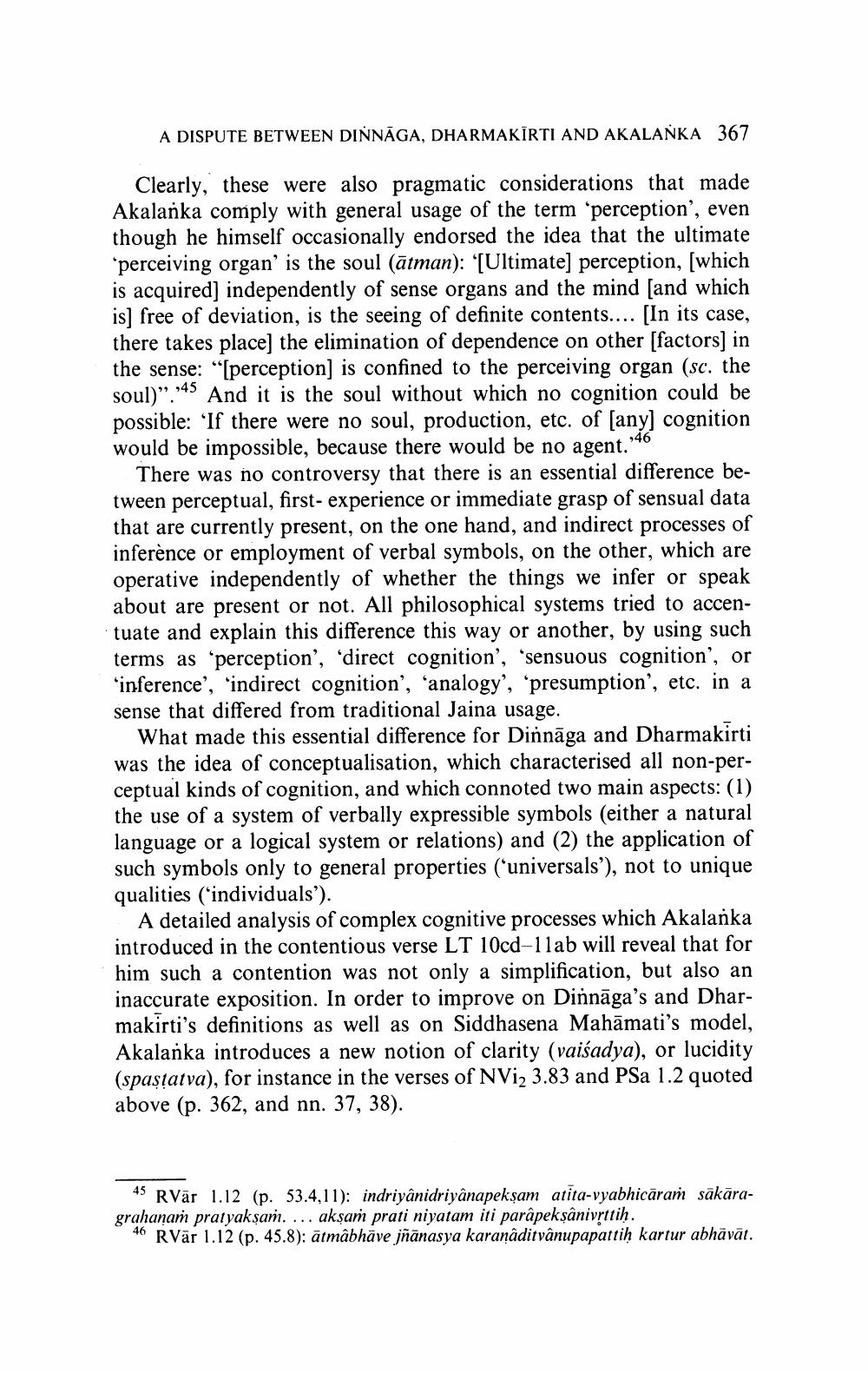________________
A DISPUTE BETWEEN DINNĀGA, DHARMAKIRTI AND AKALANKA 367
Clearly, these were also pragmatic considerations that made Akalanka comply with general usage of the term “perception', even though he himself occasionally endorsed the idea that the ultimate *perceiving organ’ is the soul (ātman): [Ultimate) perception, (which is acquired) independently of sense organs and the mind and which is] free of deviation, is the seeing of definite contents.... [In its case, there takes place) the elimination of dependence on other [factors) in the sense: “Iperception is confined to the perceiving organ (sc. the
il)" .45 And it is the soul without which no cognition could be possible: 'If there were no soul, production, etc. of (any) cognition would be impossible, because there would be no agent.:46
There was no controversy that there is an essential difference between perceptual, first-experience or immediate grasp of sensual data that are currently present, on the one hand, and indirect processes of inference or employment of verbal symbols, on the other, which are operative independently of whether the things we infer or speak about are present or not. All philosophical systems tried to accentuate and explain this difference this way or another, by using such terms as “perception', 'direct cognition', 'sensuous cognition', or 'inference', 'indirect cognition', 'analogy', 'presumption', etc. in a sense that differed from traditional Jaina usage.
What made this essential difference for Dinnāga and Dharmakirti was the idea of conceptualisation, which characterised all non-perceptual kinds of cognition, and which connoted two main aspects: (1) the use of a system of verbally expressible symbols (either a natural language or a logical system or relations) and (2) the application of such symbols only to general properties ('universals'), not to unique qualities ('individuals').
A detailed analysis of complex cognitive processes which Akalanka introduced in the contentious verse LT 10cd-11ab will reveal that for him such a contention was not only a simplification, but also an inaccurate exposition. In order to improve on Dinnāga's and Dharmakirtis definitions as well as on Siddhasena Mahāmati's model, Akalanka introduces a new notion of clarity (vaišadya), or lucidity (spastatva), for instance in the verses of NVi, 3.83 and PSa 1.2 quoted above (p. 362, and nn. 37, 38).
49 RVār 1.12 (p. 53.4,11): indriyânidriyânapeksam atita-vyabhicaram sākāragrahanam pratyakşam. ... akşam prati niyatam iti parâpek şânivrttih.
46 RVär 1.12 (p. 45.8): ātmâbhāve jñānasya karanâditvânupapattih kartur abhāvāt.




